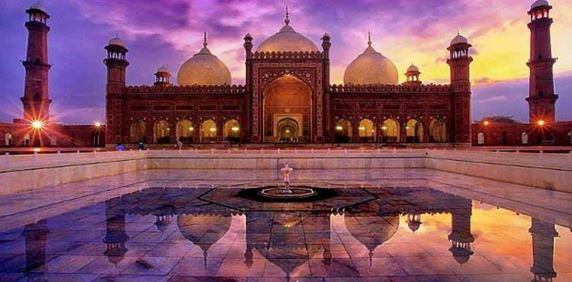Lahore, Pakistan’s capital of Punjab, is a bustling city with a population of around 12.5 million people (2020) and is known for its rich culture, beauty, history, entertainment, and fantastic food. You may have visited many cities worldwide, but Lahore stands out for its unique rich culture and hospitality. It is a modern city with a wide range of cultures. There are several sites to explore after you arrive in Lahore. The list is extensive but Click here to know about the top places to see in Lahore.
Lahore is frequently called the “city of colleges and universities.” Lahore is home to several prestigious universities. It is also known as the “City of Gardens.” It is famous for its exquisite food, as a center of entertainment, and as the backbone of several businesses like IT, entertainment, and trade. Another feature that distinguishes Lahore is its Religious Places like Badshahi Mosque Lahore and Data Darbar. If you want to visit Lahore, you will be astounded by the warmth of the Lahori people, known as open-hearted people.
Badshahi Mosque
Lahore is home to the Badshahi Mosque. It is a renowned tourist site and religious monument with a capacity of 10,000 people. After completing it in 1673, this mosque became a symbol of authority for the Mughal Empire.
The Badshahi Mosque has historically been utilized for military purposes. Before Pakistan gained independence, the Sikh community held the Badshahi Mosque. After 1947, the Badshahi Mosque was restored to its original style and purpose. People from all around the country are now flocking to Lahore to learn about the city’s rich history.
Data Ali Hajveri shrine or Data Darbar
Lahore is a city full of saints and shrines. There are other shrines, but the Data Ali Hajvery shrine or Data Darbar is the most notable. It is steeped in Sufi heritage and has drawn travelers for ages. People came from around the world to visit the shrine, including Pakistan. Every day, 40,000 to 50,000 people visit the shrine of Hazrat Ali Hajveri, also known as “Data Ganj Bakhsh.” Ali Hajvery was the outstanding saint of that region and is now one of Pakistan’s most famous Sufi saints. It is located close to the Old City, west of Bhatti Gate.
Gurdwara Dera Sahib
The Gurdwara Dera Sahib Sri Guru Arjun Dev is a historical Sikh shrine in the Pakistani city of Lahore. It honors the place where Sikhism’s fifth guru, Guru Arjan Dev, was murdered on April 20, 1606. It is a sacred site for Sikhs since it has countless historical events.
Gurdwara Dera Sahib’s architecture is a beautiful combination of Mughal and Sikh influences. The main hall features a magnificent dome roof with Guru Nanak Dev Ji’s artwork. Inside the Gurdwara, there are lovely marble walls and flooring. Many people are drawn to the architectural splendor of its golden dome. It has lovely architecture with elaborate flower carvings and paintings.
There is also a Ranjit Singh Samadhi, constructed by his son Kharak Singh. Sikh pilgrims from around the globe gather here on June 16 to demonstrate their devotion. Various living rooms, langar khana, and basic facilities are provided for pilgrims, like in every Gurdwara. This Gurdwara is an excellent example of religious cooperation, with Muslims prostrating in the mosque on one side and Sikhs worshipping on the other.
Sacred Heart Cathedral
The Holy Sacred Heart Cathedral is the seat of the Roman Catholic Archdiocese of Lahore in Lahore, Punjab, Pakistan. Bishop Fabian Eestermans, Bishop of Lahore, finished the Cathedral on November 19, 1907. It was constructed with Belgian cooperation and resources at the request of Bishop Godefroid Pelckmans (Bishop of Lahore, 1893-1904). Its origins may be traced back to the stay of the Belgian Capuchins in Pakistan.
Belgian architect Edouard Dobbeleers of Antwerp created this Roman-Byzantine Cathedral. The Cathedral has registered over 20,000 baptisms and about 5,500 weddings since its inception. The Cathedral was awarded the Belgian Heritage Abroad medal in 2015.
Wazir Khan Mosque
Hakeem Ilam-ud-din Ansari, the Mughal Court’s top physician, commonly known as Wazir Khan, commissioned the Wazir Khan Mosque. Wazir Khan afterward became the Viceroy of Punjab and commissioned several more monuments in Lahore. He held a vast plot of land near the Delhi Gate and constructed the Wazir Khan Mosque in 1634 to contain the ashes of Miran Badshah, a prominent Sufi saint. Before the construction of the Wazir Khan Mosque, the site was home to an old shrine to the saint. The mosque also replaced the previous Maryam Zamani Mosque as the influential mosque in Lahore for congregational Friday prayers.
In conclusion
This brings the article on Lahore’s religious places to a close. Tourists are attracted to mosques, Gurdwara, and churches from other civilizations, prompting them to visit their spiritual sites in Lahore.
